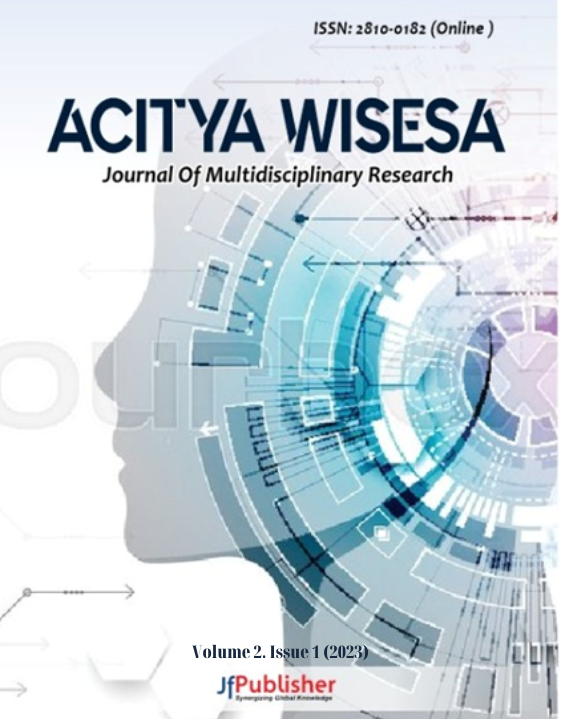MITIGATION OF LANDSLIDE PRONE AREAS IN ANTICIPATION OF CLIMATE CHANGE IMPACTS
Universitas Slamet Riyadi
Universitas Slamet Riyadi
Universitas Slamet Riyadi
DOI:
https://doi.org/10.56943/jmr.v2i1.277In general, landslides occur when the upward slope is higher than the retaining force which is caused by high rainfall intensity, land slope, load and impermeable layer, soil solum thickness, and soil type. The restraining force is generally controlled by the resistance of soil shear, the density and strength of plant roots and the strength of rocks. This disaster also often occurs in Indonesia, which has many mountains that stretch across the country. This research aims to determine landslide-prone areas, landslide types, dominant factors that cause landslides and landslide mitigation in anticipation of the impact of non-structural climate change. The research included 3 stages, such as pre-field, field, and post-field which are interrelated and complementary. The research location is around landslide-prone lands along the southwest slope of Mount Lawu in Karanganyar Regency, Central Java. Based on the results of the research analysis, it indicates that the southwest slope of Mount Lawu, especially in Karanganyar, is highly prone to landslides. Therefore, it is not suitable to be used as agricultural and residential land because of its area of about 6,797.06 ha, and is categorized into three crucial parts, such as areas that are still highly prone to landslides of about 5,005.35 ha (73.64%); landslide-prone area of 1,784.23 ha (26.25%); and slightly landslide-prone area of 7.48 ha (0.11%).
Keywords: Climate Change Impacts Landslide Prone Areas Mitigation
Agustina, L. K., Harbowo, D. G., & Al Farishi, B. (2020). Identifikasi Kawasan Rawan Longsor Berdasarkan Karakteristik Batuan Penyusun di Kota Bandar Lampung. Elipsoida : Jurnal Geodesi Dan Geomatika, 3(1), 30–37. https://doi.org/https://doi.org/10.14710/elipsoida.2020.7769
Alemu, M. M. (2016). Sustainable Land Management. Journal of Environmental Protection, 7(4). https://doi.org/http://dx.doi.org/10.4236/jep.2016.74045
Hanifa, H., & Suwardi. (2023). Identifikasi Tingkat Kerawanan Tanah Longsor di Ajibarang Banyumas menggunakan Metode Skoring. Jurnal Tanah Dan Sumberdaya Lahan, 10(1). https://doi.org/https://doi.org/10.21776/ub.jtsl.2023.010.1.10
Hardiyatmo, H. C. (2012). Mekanika Tanah 1. Gadjah Mada University Press.
Iskandar, Andika, T., & Wulandari. (2021). The Model of Nonstructural Mitigation Policy to The Landslide Prone Residential Areas in Lebong, Bengkulu. Yuridika, 36(2). https://doi.org/http://dx.doi.org/10.20473/ydk.v36i2.22741
Juventine, E. J. (2012). Landslide Hazards: Household Vulnerability, Resilience and Coping in Bududa District, Eastern Uganda [University of The Free State]. https://www.ufs.ac.za/docs/librariesprovider22/disaster-management-training-and-education-centre-for-africa-(dimtec)-documents/dissertations/2284.pdf?sfvrsn=2
Manliclic, K. S. (2016). A Suite of Methodologies to Systematically Site Distributed Generation Technologies, such as Poly-Generation Fuel Cells, in Support of Alternative Transportation Infrastructure [University of California]. https://escholarship.org/content/qt19d8r386/qt19d8r386.pdf
Miswar, D., Wahono, E. P., Aristoteles, Sutyatna, A., Yarmaidi, Darmawan, R. Y., Zakaria, W. A., & Sugiyanta, I. G. (2021). The Landslide Spatial Modelling in Limau District, Tanggamus Regency. Proceedings of the Universitas Lampung International Conference on Social Sciences (ULICoSS 2021). https://doi.org/https://doi.org/10.2991/assehr.k.220102.030
Nikolic, T. (2014). Direct and Indirect Impact of Landslide on Environment. Engineering Geology for Society and Territory, 5, 1237–1241.
Pambudi, A. S. (2019). Watershed Management in Indonesia: A Regulation, Institution, and Policy Review. Jurnal Perencanaan Pembangunan, 3(2), 185–202. https://doi.org/https://doi.org/10.36574/jpp.v3i2.74
Priyono, & Maulida, E. I. (2021). Mitigation of Area Prone to Landslide in Anticipating the Impact of Climate Change. ASEANA: Science and Education Journal, 1(1). https://doi.org/https://doi.org/10.53797/aseana.v1i1.3.2021
Sulaksono. (2023). Legal Framework for Corporate and Government Paradigm to Disaster Victims. YURIS (Journal of Court and Justice), 2(1). https://journal.jfpublisher.com/index.php/jcj/article/view/228

